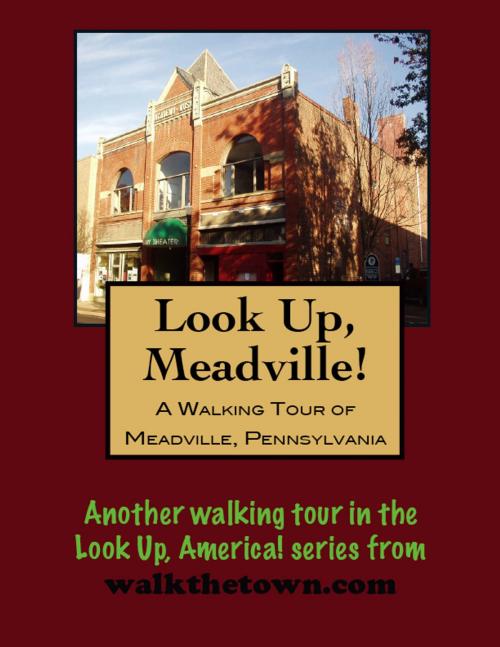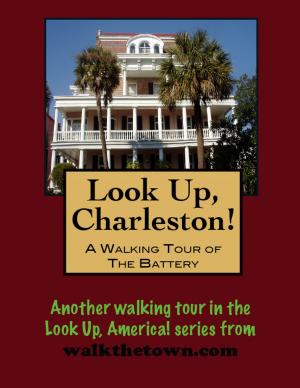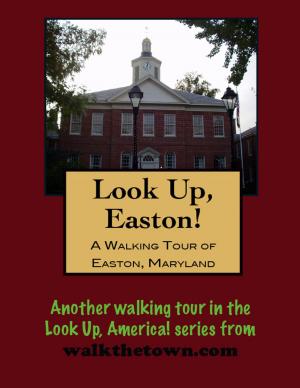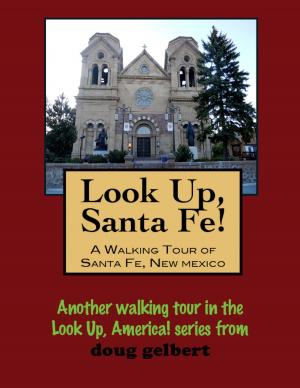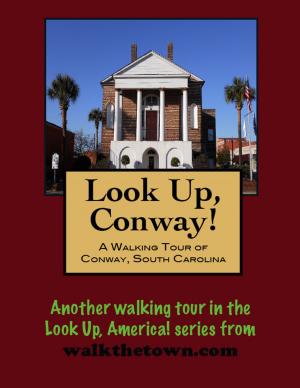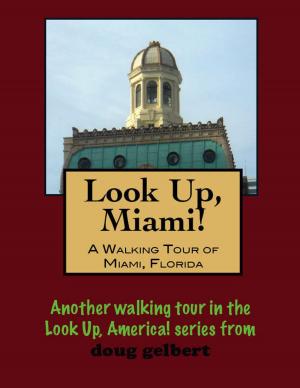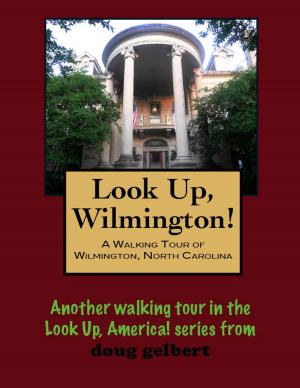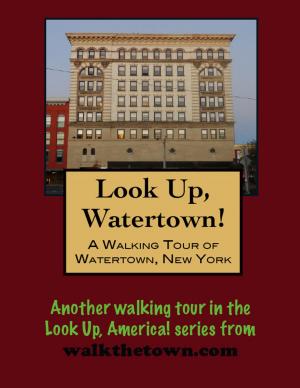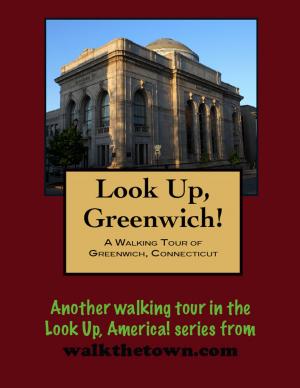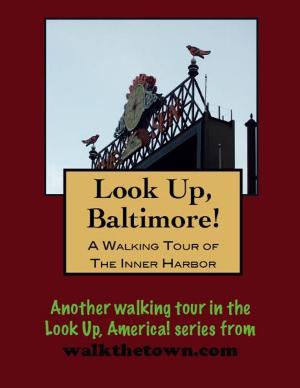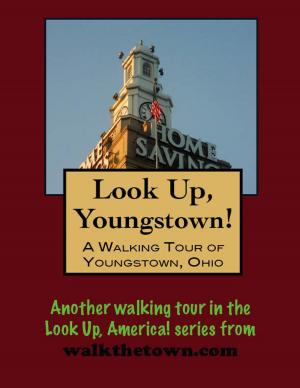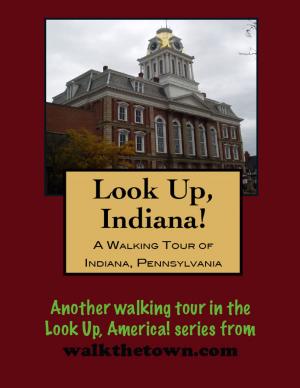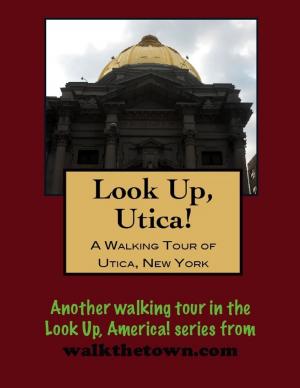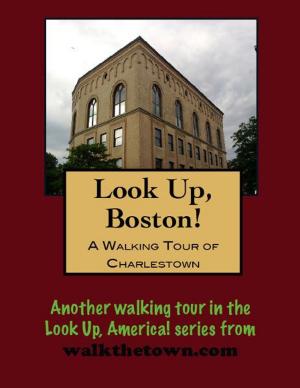| Author: | Doug Gelbert | ISBN: | 9781458147400 |
| Publisher: | Doug Gelbert | Publication: | February 9, 2011 |
| Imprint: | Smashwords Edition | Language: | English |
| Author: | Doug Gelbert |
| ISBN: | 9781458147400 |
| Publisher: | Doug Gelbert |
| Publication: | February 9, 2011 |
| Imprint: | Smashwords Edition |
| Language: | English |
There is no better way to see America than on foot. And there is no better way to appreciate what you are looking at than with a walking tour. Whether you are preparing for a road trip or just out to look at your own town in a new way, a downloadable walking tour is ready to explore when you are.
Each walking tour describes historical and architectural landmarks and provides pictures to help out when those pesky street addresses are missing. Every tour also includes a quick primer on identifying architectural styles seen on American streets.
David Mead, Connecticut-born in 1752, was the pioneer to the waters of the French Creek, following land claims from his native colony through the Wyoming lands of northeast Pennsylvania to these lands of the Iroquois Indians where Chief Custaloga had built a village known as Cussewago. Mead led a small band of settlers that included his brothers, their wives and families and optimistically laid out the original town plat in 1792 in the face of looming Indian hostilities. But by the next year he had sold a few lots and Meadville was off and running.
In 1800, the Pennsylvania counties of Armstrong, Beaver, Butler, Crawford, Erie, Mercer, Warren and Venango were cleaved from a part of Allegheny County. The population of Crawford County was then 2,346. Owing to the sparse population of the new counties, Erie, Mercer, Warren and Venango were included in the Crawford County District with the courts of justice located in Meadville. By the mid nineteenth century, Meadville was the most prominent and elegant community in this part of Pennsylvania. It had a reputation for education (Allegheny College was the second school west of the Allegheny Mountains when it was established in 1815), religion (the Meadville Theological School was a minister-generator for the Unitarian church), and law (the town was the birthplace of the direct primary system of elections in the United States).
The big boost for commerce arrived with the Atlantic and Great Western Railway of Pennsylvania (now the Erie Railroad) in October 1862. With Meadville practically half way between New York and Chicago, the railroad opened a wide area of markets to the farms and industries of Crawford County. Meadville was also well-positioned as the gateway town to the new oil boom that came with Edwin Drake’s new oil wells in the region in 1859. With its already well-established base, Meadville enjoyed the boom without crashing in the bust of the oil days.
Meadville’s 20th century notoriety began in Chicago in 1893 when Whitcomb L. Judson invented the hookless fastener. Meadville’s Lewis Walker moved the enterprise back to Pennsylvania where Gideon Sundback invented the fastener used everywhere today. It was not a money-maker, however, until 1923 when the B.F. Goodrich Company used it on a new line of rubber galoshes. The new shoes were called Zippers - the galoshes forgotten today but not so their little metal fastener. Meadville became known as the “Zipper Capital of the World.”
Our walking tour will visit commercial, residential, ecclesiastical and governmental sites all fastened together by Diamond Park, still a public use green area as planned more than 200 years ago, and where our explorations will commence...
There is no better way to see America than on foot. And there is no better way to appreciate what you are looking at than with a walking tour. Whether you are preparing for a road trip or just out to look at your own town in a new way, a downloadable walking tour is ready to explore when you are.
Each walking tour describes historical and architectural landmarks and provides pictures to help out when those pesky street addresses are missing. Every tour also includes a quick primer on identifying architectural styles seen on American streets.
David Mead, Connecticut-born in 1752, was the pioneer to the waters of the French Creek, following land claims from his native colony through the Wyoming lands of northeast Pennsylvania to these lands of the Iroquois Indians where Chief Custaloga had built a village known as Cussewago. Mead led a small band of settlers that included his brothers, their wives and families and optimistically laid out the original town plat in 1792 in the face of looming Indian hostilities. But by the next year he had sold a few lots and Meadville was off and running.
In 1800, the Pennsylvania counties of Armstrong, Beaver, Butler, Crawford, Erie, Mercer, Warren and Venango were cleaved from a part of Allegheny County. The population of Crawford County was then 2,346. Owing to the sparse population of the new counties, Erie, Mercer, Warren and Venango were included in the Crawford County District with the courts of justice located in Meadville. By the mid nineteenth century, Meadville was the most prominent and elegant community in this part of Pennsylvania. It had a reputation for education (Allegheny College was the second school west of the Allegheny Mountains when it was established in 1815), religion (the Meadville Theological School was a minister-generator for the Unitarian church), and law (the town was the birthplace of the direct primary system of elections in the United States).
The big boost for commerce arrived with the Atlantic and Great Western Railway of Pennsylvania (now the Erie Railroad) in October 1862. With Meadville practically half way between New York and Chicago, the railroad opened a wide area of markets to the farms and industries of Crawford County. Meadville was also well-positioned as the gateway town to the new oil boom that came with Edwin Drake’s new oil wells in the region in 1859. With its already well-established base, Meadville enjoyed the boom without crashing in the bust of the oil days.
Meadville’s 20th century notoriety began in Chicago in 1893 when Whitcomb L. Judson invented the hookless fastener. Meadville’s Lewis Walker moved the enterprise back to Pennsylvania where Gideon Sundback invented the fastener used everywhere today. It was not a money-maker, however, until 1923 when the B.F. Goodrich Company used it on a new line of rubber galoshes. The new shoes were called Zippers - the galoshes forgotten today but not so their little metal fastener. Meadville became known as the “Zipper Capital of the World.”
Our walking tour will visit commercial, residential, ecclesiastical and governmental sites all fastened together by Diamond Park, still a public use green area as planned more than 200 years ago, and where our explorations will commence...
